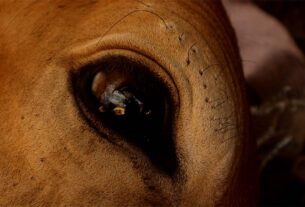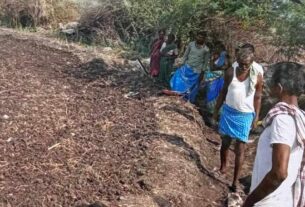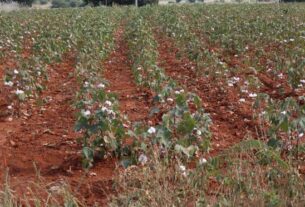Villagers from Mustur and Dhotrabandhi in Manvi have been facing hardship after bridge collapsed, since more than 15 years.
It was just another day for Hanumanth’s family. His mother was sitting next to the earthen stove preparing the afternoon lunch. Hanumanth was sitting outside their mud house on an old bed. He suddenly feels a severe pain in the chest and calls out to his wife and mother for help.
A family member immediately hails an auto to take him to the hospital, and they set off. But there was no way they could reach the hospital on time, the bridge connecting their village Mutsur to Manvi taluk (where the hospital was) had collapsed 15 years ago, and was awaiting its repair.
Hanumanth breathed his last in the auto; the bridge, in a good condition could have saved his life. It was constructed around 15 years ago by Manvi’s Irrigation Department with the aim to reduce the distance between the heartland of Manvi taluk and Mustur, a small village in the taluk.
But since the time of its construction, the bridge has not been of much use to the villagers, as every year during the rainy season it collapses when water from the river below overflows, government sends men to repair it, and the next year it collapses again.
No permanent solution has been found yet for the bridge which caused an old mother to lose her son and a family of five to lose their father.
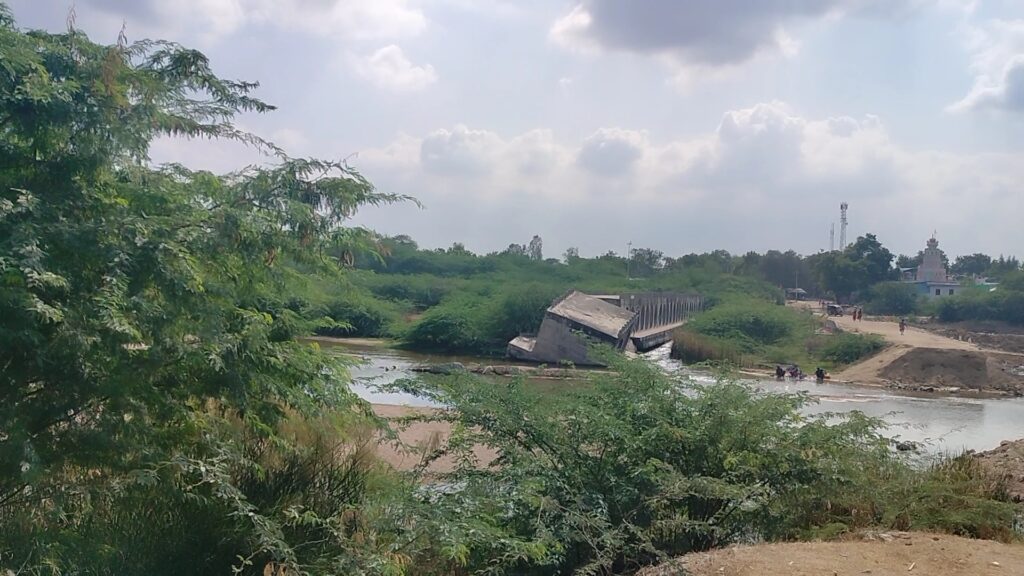
Maqsood Ali, Junior Engineer Officer, Public Works Department (PWD), said because the state government is not allocating budget to build a permanent structure, the Public Works Department (PWD) and Panchayat Raj Engineer department are making temporary repairs to the bridge with their limited budget.
Lack of a permanent solution also means lack of emergency medical attention in the nearest Manvi taluk hospital. Early in the morning, two brothers Bimanna and Tayappa (also from Mustur) suddenly get into a fight; and, Bimanna finding himself helpless, drinks poison that was kept on the shelf. Tayappa and his mother call an auto and immediately rushed him to the hospital. But the collapsed bridge takes Bimanna’s life too. Bimanna died during the rainy season, when the bridge is within the water. His family had had to take the long way to the general hospital.
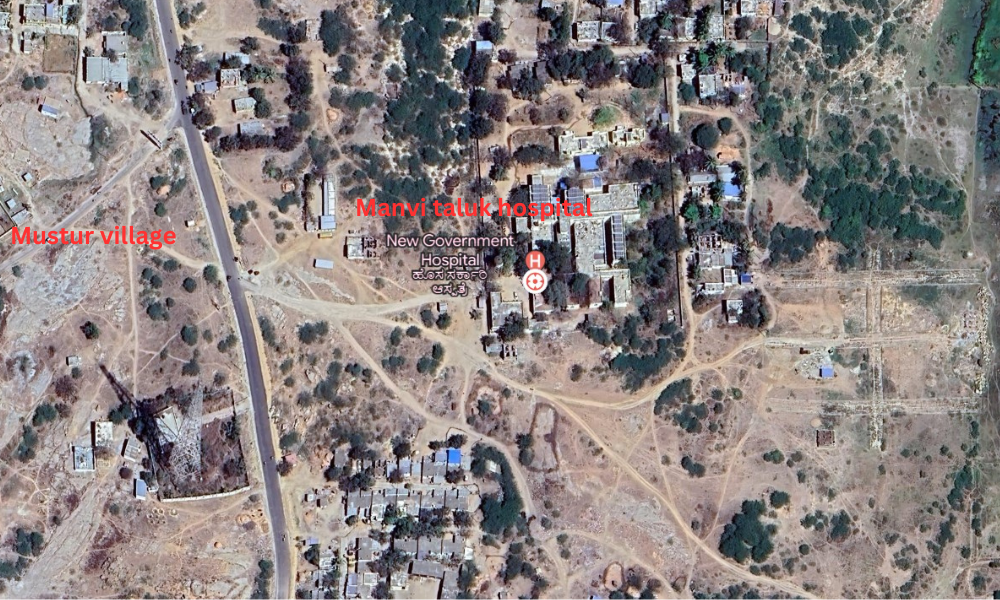
Hemavati, a class 9 student from Konapurpete girls school said as her school is on another side of the bridge, she finds it hard to cross the bridge, especially during rainy season when she has to miss her school. Additionally, the bus connectivity is poor as there is no fixed bus time, she added. One day she got late for her exam and her teacher asked her to sit outside the classroom, she recalled. She added that if she will take an auto to reach school, it will become very expensive for her, as auto driver charges around Rs. 500 for 15 km. “It is not possible for me to spend this kind of money everyday,” she said.
“The bridge could be a small problem for the government authorities but not for us; from school children to old people everyone is suffering”, Sherappa, a villager from Mustoor village said.
Sherappa also complained about the water scarcity in their village and said that the broken bridge was also increasing their drinking water problems, as the water tanker cannot come at the required time. When the water tanker doesn’t come to the village, the villagers go to a canal near the village to take water from the canal to quench their thirst, but sadly canal water also finishes in one hour, he said.
Jagadish Chour, Tahasildar of Manvi Taluk, said, such problems were increasing due to a lack of system. And the most important thing is that villagers should voice their problems, he said. “And for this type of social causes, the government should assign expert to investigate the situation and do the planning according to that,” he recommended.
A similar suggestion was given by Dr. T.H.Murthy, Chairman of Rural Development Studies, Bangalore University. He said that the villagers should come forward and agitate for the speedy completion of the work.
Ali said the Mustur village bridge construction work was transferred from the Irrigation Department to the PWD in 2010-11. He added that the state government has asked them to build the bridge at a low level so, they put ‘mooram’ (cement mortar) and insert a pipe, and the main bridge is built above the pipe. He said that they diverted the water before starting work on the bridge. “Temporary bridge has limited service life and there is no lifetime guarantee,” he added.
“First, we went to the village for inspection and planned it according to the survey. We are asking for more fund from the State government but they are not allotting enough funds to build a permanent bridge. The fund transaction process is also very slow. The PWD started construction in January 2024 and the government has allotted Rs. 25 lakh to PWD to construct the temporary bridge, he added.
He further said this time they are planning to build a concrete wall on both sides of the bridge to control the water pressure and increase the service life of the bridge.
“We put pipe below the bridge so that it can pass the water to other side of the bridge for irrigation and agricultural work. Pipe also control the flow of water in some extent. We gave a proposal of worth Rs. 14 crore but the state government didn’t response,” he said.
Anjannya Nayak, president of Bhogavathi Gram Panchayat of Mustur village said, “I didn’t register any complaint with the Taluk officer or to the Tahsildar. When the MLA visited our village, villagers asked him to repair this bridge. He asked the Taluk officer to assign the work to the PWD and ordered immediate beginning of the construction work.”
He added that they don’t have the record of each year’s allocation for the construction of the bridge.
Due to the collapsed bridge, buses take a roundabout way to reach the Mustur village and that’s why less number of buses go to the village.
Khalid Ahamad, Taluk Executive Officer, Manvi said the PWD is building a permanent bridge in Mustur. “We do not have much information about the Mustur village bridge construction work. “Bridge, road, water and bus connectivity are normal issues in rural areas,” he said. He added that they are trying to deal with it and have informed the bus depot manager about the poor bus connectivity to Mustur. He has assured to arrange more number buses, he said.
A similar problem is witnessed in Dhotarbandi village, also in Manvi. Rasulla, a contractor said the Dhotarbandi bridge connects Dhotarbandi with Utkunur Panchayat area. The schools, Primary Healthcare Centre (PHC) and all other important facilities are inside the Utkunur village, he said. This Dhotarbandi bridge is a short and feasible way which connects to Utkunur, else villagers have to take another long way to reach Utkunur which is 30 km away, he said. “When the bridge collapsed, no one came from Utkunur to Dhotarbandi and vice versa. The Panchayat Raj Engineer built a temporary bridge, which has almost sunk into the water,” he added.
“They build a temporary bridge every year and after every rainy season, the heavy water flow breaks the temporary structure. Around five months ago, they built a temporary bridge again. And half the bridge from the middle has already sunk in water,” he said.
Ambika, a college student said she walks from Utkunur village to Dhotarbandi bus stop which is three kilometres away from her village. She takes this way to go to college everyday and in rainy season she doesn’t go to college, she said.
Yallappa, a panchayat member, said, “Every year we wrote a complaint to the Tahasildar and Assistant Commissioner but they denied to sanction Rs. five crore for a permanent bridge. So, they built a temporary bridge, due to which villagers and school children find themselves in multiple problems. During rainy season parents don’t allow their children to go to school.”
Dhotarbandi bridge construction work was completed under Venkantesh, Junior Engineer, Panchayat Raj Engineering Department. He said, “We gave a proposal for a permanent bridge but the government didn’t sanction the proposed amount. The allocated budget was only Rs. 3 lakh to Rs. 5 lakh. So, we renovated the bridge. The budget was less even to build a temporary bridge, he said. The bridge was built at a low level which is cheaper to build, he added. Heavy vehicles shouldn’t pass through this low-level bridge but most of the heavy vehicles do, he said. He added that heavy vehicles which take goods to Andhra Pradesh take the bridge to reach quicker.
“We are also planning to build two long concrete walls to protect the bridge from inflow of water during monsoons but it requires more budget. The government is not allocating fund for this,” he added.
According to a NITI Aayog report, Raichur district (Manvi taluk comes under it) are “aspirational districts” as they are performing below national average as per NITI Aayog indices. Raichur ranked 12th in the aspirational district list.
The Aspirational District Programme is essentially focused on achieving Sustainable Developments Goals (SDGs) at local levels which will push the nation towards progress. This programme was launched in 2018 with an aim to achieve the target by 2022. The main focus is to improve India’s rank in Human Development Index (HDI) ensuring the enhancement of living standards and growth of citizens.
Chief minister Siddaramaiah announced the allocation of Rs. 3,210 crore for aspirational districts, out of which Rs. 1,341 crore funds were spent in 2021-2022. Karnataka has 112 aspirational taluks.
NITI Aayog has identified 112 aspirational districts across 27 states; the major indicators being health and nutrition, education, agriculture and water resources, financial inclusion, skill development and basic infrastructure which can ensure higher ranks in the Human Development Index. This programme emphasizes different sectors: health and nutrition (30 percent), education (30 percent), agriculture and water resources (20 percent), financial and skill development (10 percent) and basic infrastructure (10 percent).
In India, 52 percent bridges collapsed due to floods and the substructure failure rate is 72 percent. An analysis done by Rajiv Garg, a professor from Central Road research Institute reveals that from 1977-2017, more than 2,130 (excluding culverts and pedestrian bridges) bridges collapsed in India. Media reports note that some bridges collapsed during the process of construction and some collapsed during their service life. Most bridges have a service life of 34.5 years which is very low compared to their expected design life. There is also no proper planning for the construction, which is why their service life is very less as compared to the expected design life.
Hanumanth’s mother, Yellamma, his widow wife with his three kids living in a house with one room without any bathroom and kitchen. At this age Yellamma cook food on ‘chullah’ outside of their house. His wife’s name is Hanumanti works in agricultural land to feed her family and her mother-in-law who stays at home to cook food for the whole family. Both of them are contributing towards their family expenses.
Yellamma with a small keypad phone with no SIM card in it, said that her grandchildren are studying in school, Priyanka is the elder sister she is studying in seventh grade, middle child is in fourth grade and last child Birappa is in second grade. Hanumanth’s brother is staying in another house, sometimes his brother’s son came to visit them. “No financial support from anyone, we are living in very difficulties,” she said.
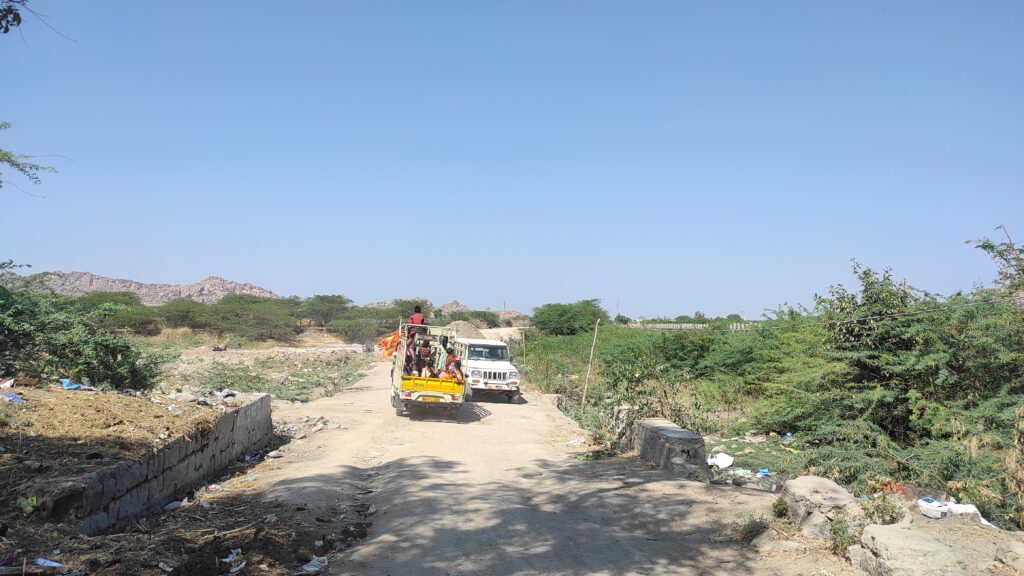
According to a report, “Rural connectivity plays a significant role in the socio-economic growth and development of rural people by providing them access to basic amenities for a better livelihood.”
According to a recent World Bank data, the rural population in India accounts for 65 percent of the total population, which shows a declining trend. The declining trend of rural populations is a big concern for agricultural growth and development. The absence of well-knit road connectivity in rural areas is to blame, which has deprived the rural people of basic facilities needed for growth and development, leading to large-scale migration of rural people to towns and cities in search of a better livelihood opportunity.
Under the Pradhan Mantri Gram Sadak Yojana, 1,73,775 bridges were built, out of which 7,789 Long Span Bridges (LSBs) were built, of the sanctioned 10,383 long span bridges.
Recently, in a major accident that happened in Gujarat, Morbi Bridge collapsed in October, 2022 just four days after it was reopened after repair. More than 140 people died due to the collapse. After a year a Special Investigation Team (SIT) report found that it was the mismanagement of the company concerned, as they had not renovated the bridge properly before reopening. The report held the company responsible for the incident.
MD Shaney Ali, a research scholar, said “Bridge failure and road closure can cause delays in accessing hospitals, particularly in serious cases which require immediate care. This can contribute to higher morbidity and mortality rates in rural regions with inadequate access to healthcare, pregnant women and elderly people.”
Dr. T.H. Murthy said a collapsed bridge might be a small issue for the government but not for villagers. The government has assigned the Corporate Social Responsibility (CSR) companies for the social development and other such essential connectivity, he said. Most importantly Community Based Organizations, Self Help Groups (SHGs) and farmer organizations should come forward for the progress and development of the village, he suggested.
“As rural areas more likely tagged as backward, the government shows a lack of interest in their development. Most people, due to several reasons eventually move to urban areas and rural problems do not finally get addressed,” he said.


